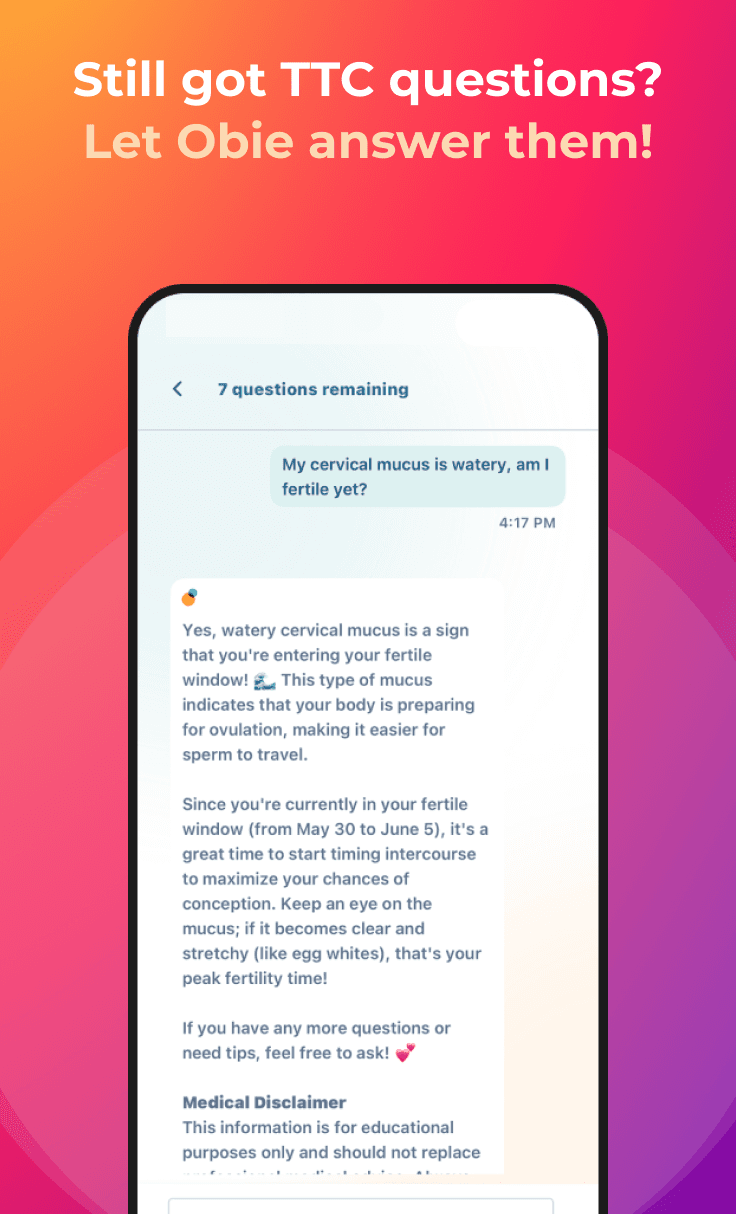Important Ovulation Symptoms
Ovulation
Obie Editorial Team

Many women look for ovulation symptoms to predict when they are most fertile either to try to get pregnant or to prevent pregnancy. Did you know that the most common physical ovulation symptoms are probably ones you notice, and don’t necessarily correlate with ovulation?
Mittelschmerz: "pain in the middle"
Mittelschmerz is German and it means literally "middle" and "pain". It is also known as ovulation pain. Mittelschmerz is a one-sided lower abdominal pain but can switch to the other side the next month or stay on the same side for several months in a row. Mittelschmerz might last a few minutes or it could last for longer. Women suffer from Mittelschmerz on varying levels and many women who ovulate normally will never have this pain. Some feel just a tiny bit of pain at the beginning of their menstrual cycle and others feel extreme pain for hours and possibly days.
Read more about Mittelschmerz.
Changes in cervical fluid
Cervical fluid changes are one of the more common physical ovulation symptoms. As ovulation gets closer, estrogen levels rise, and cervical mucus changes from thick, white mucus to a thin, slippery lubricant. When ovulation starts, cervical mucus changes again; this time it takes on a rubbery texture that will stretch between two fingers. The sticky, thick nature of cervical mucus holds onto semen and helps sperm travel safely to the egg in an environment full of deadly acids – the vagina. Physical cervical mucus ovulation symptoms don’t stop there. The body makes another change at the end of ovulation back to the sticky, thick mucus that stops sperm in its tracks.
Changes in the cervix
For women who want to take complete control of their fertility, physical ovulation symptoms include physical changes to the cervix. Women can insert one clean finger into the vagina and press on the cervix. When the female body is not ovulating, the cervix will feel tight and slightly hard – think the end of your nose. During ovulation, the cervix softens and even moves a little higher.
Changes in sex drive
Cervical fluid and cervix changes are physical ovulation symptoms you can touch and see, but there are other physical ovulation symptoms you can feel. As ovulation approaches, women often feel an increase in sex drive. It is thought that the female body gets ready to conceive every month as a basic survival instinct. While testosterone levels control female libido, there is no rise in testosterone during ovulation. Instead, there is a sharp decline in estrogen levels making normal testosterone levels more effective and thus libido increases as a physical ovulation symptom.
In addition to these three physical ovulation symptoms, women may also notice cramping, an increase in basal metabolic temperature, and spotting when the body is preparing to move into the most fertile time of the month. If a woman wants to conceive, these physical ovulation symptoms can help gauge when best to conceive.









